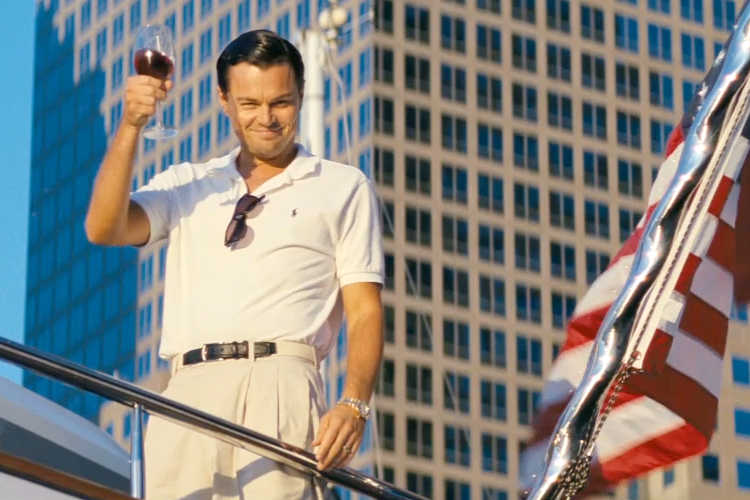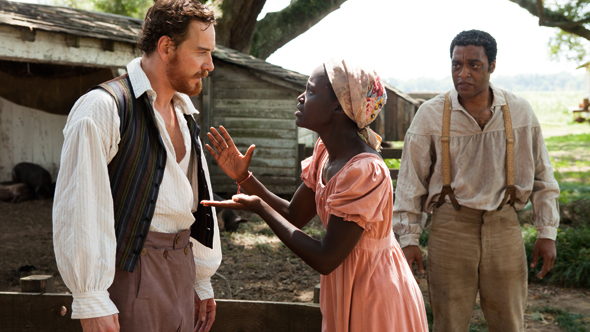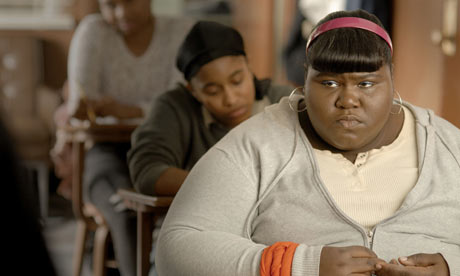One of
the main reasons I enjoy cinema is that it opens doors to any corner of the
world I wish to see. I can be transported into regions that I may never visit,
and see people I could never even imagine. Each national cinema is unique to
that culture, to its own national/regional stories and symbolism. Because of
this however, how can the outsider ever truly understand or appreciates a film
that comes from a place they have no knowledge of. How much does the outsider
miss? Do they see a completely different film to those of the films native
country? Do we even want to see the reality of a country, or rather a blurred
view of the exotic?
 Edward
Saïd, in his book Orientalism, wrote in his
post-colonialism book how the West imposes certain values and stereotypes on
cultures (specifically focusing on the Middle East), both enforcing negative,
and romanticised versions. Western Cinema (focusing specifically of that of
American and Western European) has inevitably fallen for this short-hand trap,
and continually does so. Najat Z. J Dajani’s thesis, Arabs in Hollywood:
Orientalism in Film not only presents a
fantastic filmography of a number of offending films, but also a fantastic
background to a number of case studies and how these views have changed and
developed over-time. Sadly however, his work only focuses on the same group as Saïd, and hints at a potential for redemption by
Hollywood. However, this was stunted in post-9/11 Hollywood where the Arab
would quickly become less exotic, and more demonised. When foreigners are shown
in Western films, they are often reduced to these ‘oriental’ ideas.
Edward
Saïd, in his book Orientalism, wrote in his
post-colonialism book how the West imposes certain values and stereotypes on
cultures (specifically focusing on the Middle East), both enforcing negative,
and romanticised versions. Western Cinema (focusing specifically of that of
American and Western European) has inevitably fallen for this short-hand trap,
and continually does so. Najat Z. J Dajani’s thesis, Arabs in Hollywood:
Orientalism in Film not only presents a
fantastic filmography of a number of offending films, but also a fantastic
background to a number of case studies and how these views have changed and
developed over-time. Sadly however, his work only focuses on the same group as Saïd, and hints at a potential for redemption by
Hollywood. However, this was stunted in post-9/11 Hollywood where the Arab
would quickly become less exotic, and more demonised. When foreigners are shown
in Western films, they are often reduced to these ‘oriental’ ideas.
 Foreign made films
find it notoriously hard to find audiences in the Western world. However, when
one does break through, they often find themselves fulfilling a kind of
self-prophecy, as they meet certain stereotypes. We can continue to see such
representations of other broad ethnic groups, both negative and romanticised in
many foreign made films. The ‘Gesiha’ female East Asian (You Only Live Twice (1967),
Memoirs of a Gesiha (2005)) , or
ninja male, in a Wuxia film, (The Karate
Kid (1984), The Last Samurai (2003))is
just one example. If we look at the most successful 50 foreign language films
at the Hollywood Box Office, 8 are from East Asia, 6
of which are Wuxia. The most successful of not only this group, but of any
group is Crouching Tiger, Hidden Dragon (2000)
directed by Ang Lee. Crouching Tiger,
Hidden Dragon became an incredibly successful film, featuring plenty of
fighting scenes, Gesihas and old Chinese buildings. It can be seen as a blend
of all of the East Asian stereotypes in one, epic film, a perfect storm of
unintentional orientalism that had the West foaming. It perfectly fits into the
prism of a Western view of that culture, and therefore the impressive
film-making becomes recognised, rather than mistrusted or dismissed. This
doesn’t diminish the work of Lee, but rather provides an example of how the
West is only willing to accept certain films that fulfil certain viewpoints. As
an audience from the West, we automatically impose Western ideas and symbolism onto
these films, even when they are not intended for that purpose. When these are
missing however, we are likely to quickly dismiss, or become weary of film or
film-maker.
Foreign made films
find it notoriously hard to find audiences in the Western world. However, when
one does break through, they often find themselves fulfilling a kind of
self-prophecy, as they meet certain stereotypes. We can continue to see such
representations of other broad ethnic groups, both negative and romanticised in
many foreign made films. The ‘Gesiha’ female East Asian (You Only Live Twice (1967),
Memoirs of a Gesiha (2005)) , or
ninja male, in a Wuxia film, (The Karate
Kid (1984), The Last Samurai (2003))is
just one example. If we look at the most successful 50 foreign language films
at the Hollywood Box Office, 8 are from East Asia, 6
of which are Wuxia. The most successful of not only this group, but of any
group is Crouching Tiger, Hidden Dragon (2000)
directed by Ang Lee. Crouching Tiger,
Hidden Dragon became an incredibly successful film, featuring plenty of
fighting scenes, Gesihas and old Chinese buildings. It can be seen as a blend
of all of the East Asian stereotypes in one, epic film, a perfect storm of
unintentional orientalism that had the West foaming. It perfectly fits into the
prism of a Western view of that culture, and therefore the impressive
film-making becomes recognised, rather than mistrusted or dismissed. This
doesn’t diminish the work of Lee, but rather provides an example of how the
West is only willing to accept certain films that fulfil certain viewpoints. As
an audience from the West, we automatically impose Western ideas and symbolism onto
these films, even when they are not intended for that purpose. When these are
missing however, we are likely to quickly dismiss, or become weary of film or
film-maker.
 Senegalese film-maker,
Djibril Diop
Mambéty, provides an interesting example of how films can only be successful
when they are easier to digest through Western views and symbolism. Mambéty
made only two feature length films, Touki
Bouki (1973), and Hyénes (1992). Touki Bouki became the far more
successful film of the pair, picking up awards at Cannes, as well as entering
in at 52 in Empire magazines top 100 non-English language films.
But what is interesting is the reasons why it is considered to be so great. The
Empire magazine entry alone states that the film is “shot through with French
New Wave fizz that flies in the face of conventional African cinema”, and
that it is a “hybrid of French style and African subject matter”.
Apart from the massive generalisation made by Empire, implying that the whole
of Africa shares the same influences and problems (a similar statement would
never be made in respect to Europe, or Asia), these statements clearly suggest
that the film is important because it looks European. Touki Bouki goes hand-in-hand with French New Wave. The reason for this
is simple, and understandable, it gives the audience a reference point when
watching the film. It provides a place to enter, and understand what they are
watching. When we see quick jump-cuts
and frenzied editing, instead of being confused, we can say, “ah, yes, Godard
did this as well”. We automatically bring it back into our culture, and elevate
it above what we do not attempt to understand.
Senegalese film-maker,
Djibril Diop
Mambéty, provides an interesting example of how films can only be successful
when they are easier to digest through Western views and symbolism. Mambéty
made only two feature length films, Touki
Bouki (1973), and Hyénes (1992). Touki Bouki became the far more
successful film of the pair, picking up awards at Cannes, as well as entering
in at 52 in Empire magazines top 100 non-English language films.
But what is interesting is the reasons why it is considered to be so great. The
Empire magazine entry alone states that the film is “shot through with French
New Wave fizz that flies in the face of conventional African cinema”, and
that it is a “hybrid of French style and African subject matter”.
Apart from the massive generalisation made by Empire, implying that the whole
of Africa shares the same influences and problems (a similar statement would
never be made in respect to Europe, or Asia), these statements clearly suggest
that the film is important because it looks European. Touki Bouki goes hand-in-hand with French New Wave. The reason for this
is simple, and understandable, it gives the audience a reference point when
watching the film. It provides a place to enter, and understand what they are
watching. When we see quick jump-cuts
and frenzied editing, instead of being confused, we can say, “ah, yes, Godard
did this as well”. We automatically bring it back into our culture, and elevate
it above what we do not attempt to understand.
 Hyénes on the other-hand, is a far
less successful film in terms of its canonical place in film history. Hyénes is a slower-paced film, and is clearly
less reliant on the French New Wave influences. This however removes the entry
point that Touki Bouki has, and is
therefore rather hidden beneath this monolith of African cinema. Writing on Hyénes is far more limited because of
this. Hyénes is a simple story of how
money, love and greed can change anyone for the worse. A well-respected future
mayor, Dramaan (Mansour Diouf) suddenly finds his life threatened when an
extremely wealthy ex-lover returns home and places a bounty on his head.
Richard Porton’s review is quick to attempt to position it with a Western entry
point, by saying (and again, generalising a whole continental cinema) that “Contemporary
African films have been preoccupied with two interlocking themes: the painful
legacy of a colonialist past and a concomitant ambivalence towards Western
modernity”.
Although this is a clearly unavoidable issue the film is attempting to deal
with, Porton ignores altogether many more interesting themes and ideas that
Mambéty uses.
Hyénes on the other-hand, is a far
less successful film in terms of its canonical place in film history. Hyénes is a slower-paced film, and is clearly
less reliant on the French New Wave influences. This however removes the entry
point that Touki Bouki has, and is
therefore rather hidden beneath this monolith of African cinema. Writing on Hyénes is far more limited because of
this. Hyénes is a simple story of how
money, love and greed can change anyone for the worse. A well-respected future
mayor, Dramaan (Mansour Diouf) suddenly finds his life threatened when an
extremely wealthy ex-lover returns home and places a bounty on his head.
Richard Porton’s review is quick to attempt to position it with a Western entry
point, by saying (and again, generalising a whole continental cinema) that “Contemporary
African films have been preoccupied with two interlocking themes: the painful
legacy of a colonialist past and a concomitant ambivalence towards Western
modernity”.
Although this is a clearly unavoidable issue the film is attempting to deal
with, Porton ignores altogether many more interesting themes and ideas that
Mambéty uses.
One of
the few interviews with Mambéty, done by N. Frank Ukadike, provides an
interesting outlook by Mambéty on how cinema is viewed. Ukadike asks why one of
the bodyguards is Asian; Mambéty says that “The point is not that
she is Asian. The point is that everyone in Colobane--everyone
everywhere--lives within a system of power that embraces the West”Mambéty
also continues throughout to try press the point that Hyénes is a human film, rather than a specific type of film
representing a specific group.
“To make Hyènes even
more continental, we borrowed elephants from the Masai of Kenya, hyenas from
Uganda, and people from Senegal. And to make it global, we borrowed somebody
from Japan, and carnival scenes from the annual Carnival of Humanity of the
French Communist Party in Paris. All of these are intended to open the
horizons, to make the film universal. The film depicts a human drama. My task
was to identify the enemy of humankind: money, the International Monetary Fund,
and the World Bank. I think my target is clear.
While Hyènes tells a human story to the whole world, I also
wanted to pay homage to the beauty of Africa when I made the film.”
This flies in the face of the Western view that a
film of this nature could only be a response to internal problems faced by
those in Senegal or Africa. Mambéty has instead intended to make a global film,
rather than one that pleases Western critics through images of the ‘Oriental’. When Mambéty is later on asked about the potential of co-financial productions with European and African film companies,
Mambéty reply is clear “I don't want to talk about Europe. Let's talk about
making films in Africa. Europe is not important for me.”
With Hyénes, Mambéty shuns the views
of the ‘Oriental’, and embraces the human. This perhaps could be seen as a
threatening stand-point, as it shows Africans not needing help of the superior
West, but rather attempting to mutually help each other. We cannot look down
anymore, but rather look eye-to-eye.
Whether this patronising view, the view of the ‘Oriental’
will change in the near future is extremely doubtful. While Western film
critics continue to dismiss films that they do not understand, rather than
attempting to learn what certain types of symbolism may mean, or embracing new regional
styles of film-making, it is extremely unlikely that a highly successful film
will emerge from a smaller country and enter mainstream Western consciousness.
However, living in an age where it is incredibly easy to discover at access
films from anywhere, there is room for the tide to slowly change, and for
undiscovered films, both from the past and present, to be found, and appreciated
on the level it deserves. Maybe we can never understand completely a film made
on the other side of the Earth, but that doesn’t mean we cannot appreciate it
and enjoy.
DANNY
MOLTRASI











